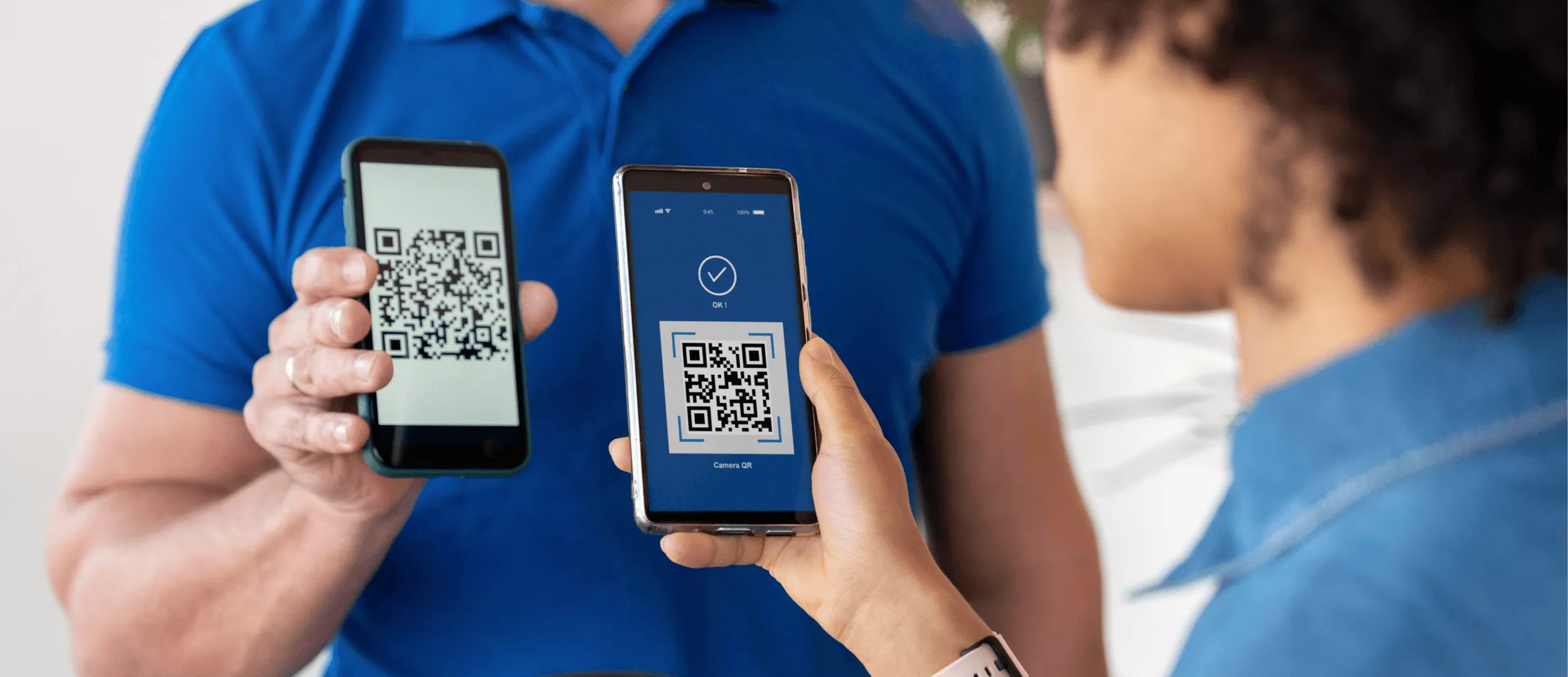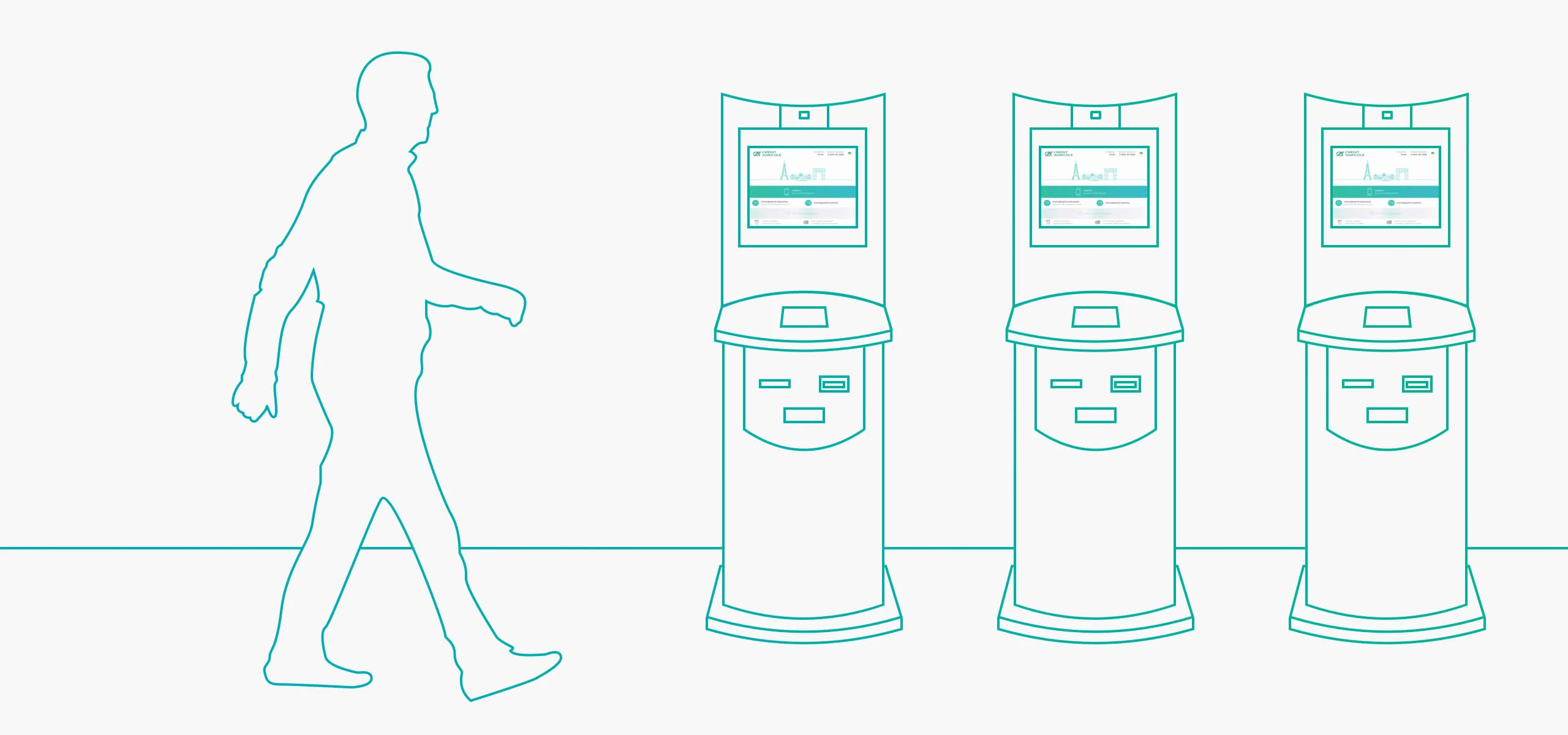How to Build a P2P Payment App: Advantages, Features, Cost

P2P payment apps are steadily gaining momentum worldwide with each passing year. In 2021, both consumers and businesses facilitated the transfer of nearly half a trillion dollars through Zelle. This notable achievement marked a 59% increase in sent payment values and a 49% surge in transaction volumes. Prior to embarking on the development of a payment app, it is imperative to select the most suitable platform type for your needs.
In today's digital age, it has become increasingly challenging for individuals to envision a life devoid of the ability to seamlessly transfer money from one card to another or make online purchases with a few simple clicks. Innovations such as PayPal and Venmo have rapidly become an integral part of users' lives by effectively catering to their financial needs.
Furthermore, it's crucial to recognize that P2P payment apps exert a substantial influence on the fintech landscape, a topic we will delve into extensively.
For those contemplating the creation of a money transfer app, this article will elucidate the key features of P2P payment solutions and elucidate the various stages inherent in the P2P payment app development process. Additionally, we will provide insights into the resources financial and temporal - required to develop a customized peer-to-peer payment app.
What is a P2P Payment App?
Let's begin by understanding the technical aspects of peer-to-peer payments. Peer-to-peer transactions involve electronic money transfers conducted directly from one account to another via a payment application. Many of us have likely used PayPal, one of the earliest and most popular P2P payment apps. But how does it work?
Here's a breakdown: You create an account and link it to your credit card or bank account. Then, using the recipient's email address, phone number, or account details, you can send money to them. Typically, the legitimacy of a transaction is verified through passwords or additional information about the sender and recipient. P2P systems enable fund transfers between owners of different bank cards, eliminating the need for intermediaries and reducing associated fees. While these apps are often free, minor charges may apply depending on the source of your funds.
To conduct these transactions, users require an app accessible via smartphones or computers and an internet connection. There's no need to deal with cash or wait in long bank lines. It's an incredibly straightforward process.
These apps generally facilitate money transfers between users of various banks, ensuring convenience. Transaction processing times can range from a few minutes to several hours, depending on the type of payment. P2P systems serve a wide range of purposes, including payment for services, online purchases, sending and receiving loan requests, conducting cross-border transactions, and more.
Ivanna
Client Manager
How Does P2P Payment App Work
How do you set up a P2P payment account? It is a straightforward process, regardless of the platform you choose. Here's a step-by-step guide to how it works:
1. Registration and Login:
Begin by creating an account on the app, and providing your contact information, such as your name, bank name, phone number, address, and city.
Set up a secure password or PIN for your account.
2. Adding a Payee:
After registration, you'll need to complete the Know Your Customer (KYC) process.
Add the recipient's information, including their name, to your account.
3. Defining the Amount:
Specify the amount you wish to transfer, and you can also include a payment description if needed (optional).
4. Password Confirmation:
Enter the password you created during registration to authenticate the transaction.
Alternatively, you may receive a one-time password (OTP) for transaction verification.
Some apps also provide security questions for authentication in case you forget your password.
5. Receipt of Payment:
Once the transaction is confirmed, a payment receipt is generated instantly.
You can download or print this receipt for your records, allowing you to keep track of your financial transactions.
Types of Peer-to-Peer Payment Systems
There are several types of peer-to-peer payment systems, each with its own characteristics and features:
1. Discrete Services:
These are standalone P2P payment apps with wallet functionality for secure money storage.
Examples include Venmo and PayPal, which have extensive user networks and support transactions in many countries.
2. Banking Services:
Bank-centric P2P payment apps may involve a bank as one of the transaction parties.
Some banks have their own smartphone apps for P2P transactions, while others use various financial institutions and credit unions for transfers.
Zelle is an example of a bank-developed P2P payment system.
3. Social Platforms:
Social media platforms, like Facebook and Snapchat, have integrated P2P payment features.
Facebook Pay, for instance, enables users to transfer funds through Messenger.
4. Mobile OS Systems:
Mobile operating systems, such as Android and iOS, have incorporated P2P payment capabilities. Users can conduct various banking transactions and pay bills through their mobile devices. These systems often provide real-time monitoring of cyber threats and fraud prevention. Each type of P2P payment system has its advantages and use cases, catering to a wide range of user preferences and needs.
Advantages of P2P Payment Apps
P2P payment services revolutionize the way we transfer money by offering a range of advantages. Let’s take a close look at them.
Convenience
One of the key advantages of P2P payment apps is the convenience they offer. Gone are the days of carrying cash or writing checks. With P2P payment apps, users can open an app on their smartphones and send money to family, friends, or businesses with a few taps. It is particularly useful in situations where you are splitting bills, paying rent, or reimbursing someone. Sending money becomes effortless and hassle-free. Developing P2P services eliminates the need for physical currency or visiting a bank branch.
Speed
Speed is another significant advantage. Traditional methods of money transfer can take days or even weeks to complete. In contrast, P2P payment apps enable almost instant transfers. Once a payment is initiated, the recipient receives the funds within seconds. This level of speed is helpful in urgent situations or when immediate access to funds is required.
Security innovations like blockchain
These services have embraced technological advancements like blockchain to enhance security. Blockchain technology underpins cryptocurrencies like Bitcoin. It offers robust security features. With blockchain, P2P services can provide a decentralized and transparent ledger that records all transactions. This means that each transaction is securely stored and cannot be altered. Moreover, blockchain technology eliminates the need for intermediaries. It reduces the risk of fraud or unauthorized access to sensitive financial information.
How Does Peer-to-Peer Payments Affect Business?
Let's explore how P2P payment apps impact various businesses and their operations:
1. Startups:
Entrepreneurs who aim to develop P2P payment apps from the ground up perceive an opportunity to offer unique solutions and revolutionize the market.
These startups seek to outshine future competitors by introducing innovative features and services.
2. Owners of Financial Software:
Businesses already involved in financial software may choose to incorporate P2P payment services into their existing solutions.
Some opt for ready-made P2P payment solutions like Zelle, while others integrate additional payment methods like Google Pay or Apple Pay to enhance competitiveness.
3. Creators of Social Media Platforms:
Social media platform developers recognize the trend set by competitors such as Facebook, Messenger, Instagram, WhatsApp, which have introduced features like money transfers and real-time payments.
To stay competitive, these creators integrate similar solutions into their products to retain users and cater to evolving needs.
Impact on Payments:
- P2P payment apps have witnessed significant growth in transaction volumes and payment volumes. For example, Venmo experienced a remarkable 57% year-on-year growth in total payment volume during the second quarter of 2021.
- Ensuring that P2P payment apps can efficiently handle increased payments and active users becomes crucial for businesses in this sector.
- Expansion into new regions of the world presents an opportunity for further growth.
Business Growth:
- The global number of smartphone users exceeds 6 billion and is projected to increase by several hundred million in the coming years.
- Key regions with a high number of smartphone users include China, India, and the United States.
- Businesses seeking rapid growth in the P2P Payments market should consider these regions as potential target audiences.
The P2P payment market presents various avenues for influencing and benefiting different types of businesses. It offers opportunities for startups to innovate, enables existing financial software providers to diversify their offerings, and encourages social media platforms to remain competitive by adapting to evolving trends. Additionally, the global smartphone user base growth further fuels the potential for business expansion in this sector.
List of Must-have Features For Creating a P2P Payment App
1. Digital Wallet (E-Wallet): Users should be able to store their bank cards and funds securely in a digital wallet within the app.
2. Transfer to a Bank Account: Enable users to transfer funds not only from card to card but also to bank accounts securely.
3. Real-Time Payments: Facilitate quick and easy payments for everyday purchases, bills, and online transactions, emphasizing simplicity and speed.
4. Transaction History: Provide users with a clear and easily accessible transaction history to help them find specific payments and keep track of their financial activities.
5. Send Bills and Invoices: Allow users to generate bills and invoices within the app, catering to both personal and business use cases.
6. Unique User ID/OTP: Enhance security with features like One-Time Password (OTP) authentication and biometric options like fingerprint recognition for app access and transactions.
7. Currency Conversion: Enable users to perform currency conversion within the app for seamless international transactions and exchange between different currency cards.
8. Push Notifications: Implement push notifications to keep users informed about incoming payments, invoices, and other important updates.
9. Customer Support and Chatbots: Offer customer support channels within the app to assist users with inquiries, transaction statuses, and issues, including the use of chatbots for quick responses.
10. Cryptocurrency Payments: Stay up-to-date with the growing popularity of cryptocurrencies by allowing users to make payments using digital currencies.
11. Admin Panel: Develop an admin panel for managing the app, including adding or removing features, monitoring transactions, and addressing any app-related issues.
12. Security Features like Encryption and Multi-Factor Authentication: Implement robust encryption techniques when building a p2p payment app. This ensures that sensitive user data, such as personal information and transaction details, are protected from unauthorized access.
13. Linking Bank Accounts/Cards: Users should be able to link their bank accounts and cards to the app. This feature allows users to seamlessly transfer funds between their bank accounts and the digital wallet within the application.
These features constitute the foundation of a P2P payment app, ensuring security, convenience, and functionality for both users and businesses.
How Much Does it Cost to Create a P2P Payment App?
The cost breakdown for creating a custom p2p payment app is as follows:
Estimation & Research:
Time: Approximately 160 hours
Cost: Approximately $7,000
Description: During this phase, your project details are gathered, and market research is conducted to identify your competitive advantage. Feedback and discussions are held to refine the project scope.
Development:
Time: Approximately 350 hours
Cost: Approximately $15,000
Description: This phase involves designing the app's interface, creating prototypes, developing the back end (including security and compliance measures), and implementing the front end to create the final visual version of the app.
Testing & Launch:
Time: Approximately 120 hours
Cost: Approximately $5,000
Description: Testing is conducted to identify and rectify any errors or bugs in the app. Once testing is complete, the app is prepared for launch, and assistance is provided to bring the app to market.
Support:
Time: Guaranteed support period of 320 hours (40 days)
Cost: Approximately $13,000
Description: Ongoing support is available for your app, including updates and maintenance as needed.
It's important to note that these cost and time estimates are approximate and can vary based on specific project requirements, additional features, the geographic location of the development team, and other factors. Customization and unique project goals may also influence the final costs.
How Stfalcon Can Assist You in Building a P2P Payment App
P2P payment applications continue to gain substantial traction in the market with each passing year. Now is an opportune moment to secure your slice of this growing industry. You have a comprehensive understanding of the essential features, key challenges, and the approximate time and cost involved in developing such a solution. With this knowledge in hand, you are prepared to transition from planning to implementation.
At Stfalcon, we specialize in crafting P2P payment solutions tailored to diverse industries. Our team of developers boasts extensive experience, having successfully delivered projects.
Partner with Stfalcon, and let us help you bring your P2P payment app vision to life. Your goals are within reach, and we are here to make them a reality.
Our Experience
SDK for a crypto wallet
Stfalcon.com was entrusted with the mission of developing an SDK for Android and iOS mobile platforms, leveraging Kotlin Multiplatform, for a cryptocurrency wallet. One of the primary objectives was to amalgamate business logic and employ a uniform codebase across diverse platforms.
To accomplish this, we harnessed the capabilities of Kotlin Multiplatform technology. This innovative approach enabled us to employ identical business models, workflows, queries, internal data processing, and encryption across all designated platforms.
Credit Agricole
Our team was tasked with the responsibility of crafting an interface design for Credit Agricole's payment kiosks.
The principal objective of these kiosks is to alleviate queues in the bank offices and reduce the workload on cashiers. Hence, it was imperative that the kiosk interface be exceptionally user-friendly, catering to even the least tech-savvy users.
Now you know how to build a p2p payment app. In this FAQ, we'll address some common questions you may have about these apps. Here are some valuable insights to help you better understand their features, security measures, and usage.
FAQ about P2P Payment App
What are the risks associated with P2P payment applications?
There are several risks associated with P2P payment apps: Security - such software solutions may be susceptible to security breaches. These are hacking, data leaks, or unauthorized access to user accounts. This could result in financial loss or personal information being compromised; Fraud - scammers may use these services to trick users into sending money under false claims. Phishing attacks, fake payment requests, or impersonation scams are common risks; Privacy - P2P payment apps often collect and store user data. The data includes transaction history and personal information. There is a risk that this data may be mishandled, shared with third parties without consent, or used for targeted advertising; Disputes and Chargebacks - these mobile applications are typically instant and irreversible. If a transaction is made in error or fraudulent activity occurs, it can be challenging to resolve disputes. Initiating chargebacks might be a problem, too. This can lead to a potential financial loss; User Error - users may accidentally send money to the wrong person or input incorrect payment details. Once a transaction is initiated, it can be difficult to recover the funds; Technical Glitches. Applications rely on stable internet connections and functioning servers. Technical glitches, network outages, or app malfunctions can disrupt transactions or cause delays.
Can P2P payments be made between countries?
Many P2P payment apps and services facilitate cross-border transactions. It allows users to send money internationally. These services typically involve currency conversion and may incur fees or charges for the transfer. When making P2P payments between countries, consider exchange rates, fees, and any regulatory requirements or restrictions that may apply. Different countries may have specific regulations governing international money transfers. These include anti-money laundering (AML) and know your customer (KYC) requirements.
Is regulatory approval required to launch a P2P payment app?
Yes, regulatory approval is typically required to launch a P2P payment app. Governments and regulatory bodies often have rules and regulations in place to ensure the safety, security, and legality of financial transactions. These regulations help prevent fraud, money laundering, and other illicit activities. To comply with these regulations, P2P payment app providers usually need to obtain the necessary licenses and approvals from the relevant authorities before they can launch their apps and offer financial services to users. If you want to build a p2p payment app, it is important to research and understand the specific regulatory requirements in the jurisdiction where you intend to operate. The regulatory landscape can vary from country to country.
Bottom Line
Now that you have a clear understanding of the P2P payment app features and benefits for business, it's essential to embark on meticulous research and decision-making. Begin by delving into user research and outlining your app's functionality. Your primary goal at this stage is to provide a comprehensive description of your idea, which can then be refined and executed with the assistance of a proficient development team.
Selecting the right development team is paramount, as the quality of your application hinges on their expertise. Take your time in making this crucial decision and opt for a team with a proven track record in developing fintech solutions.
Industry experts are anticipating a bright future for peer-to-peer payment apps, and the time is ripe to seize this opportunity. Our dedicated team is readily available to offer guidance on the technical implementation of your concept. Feel free to contact us, and we wish you the best of luck with your project!

 Read the full case study
Read the full case study
 Read the full case study
Read the full case study


